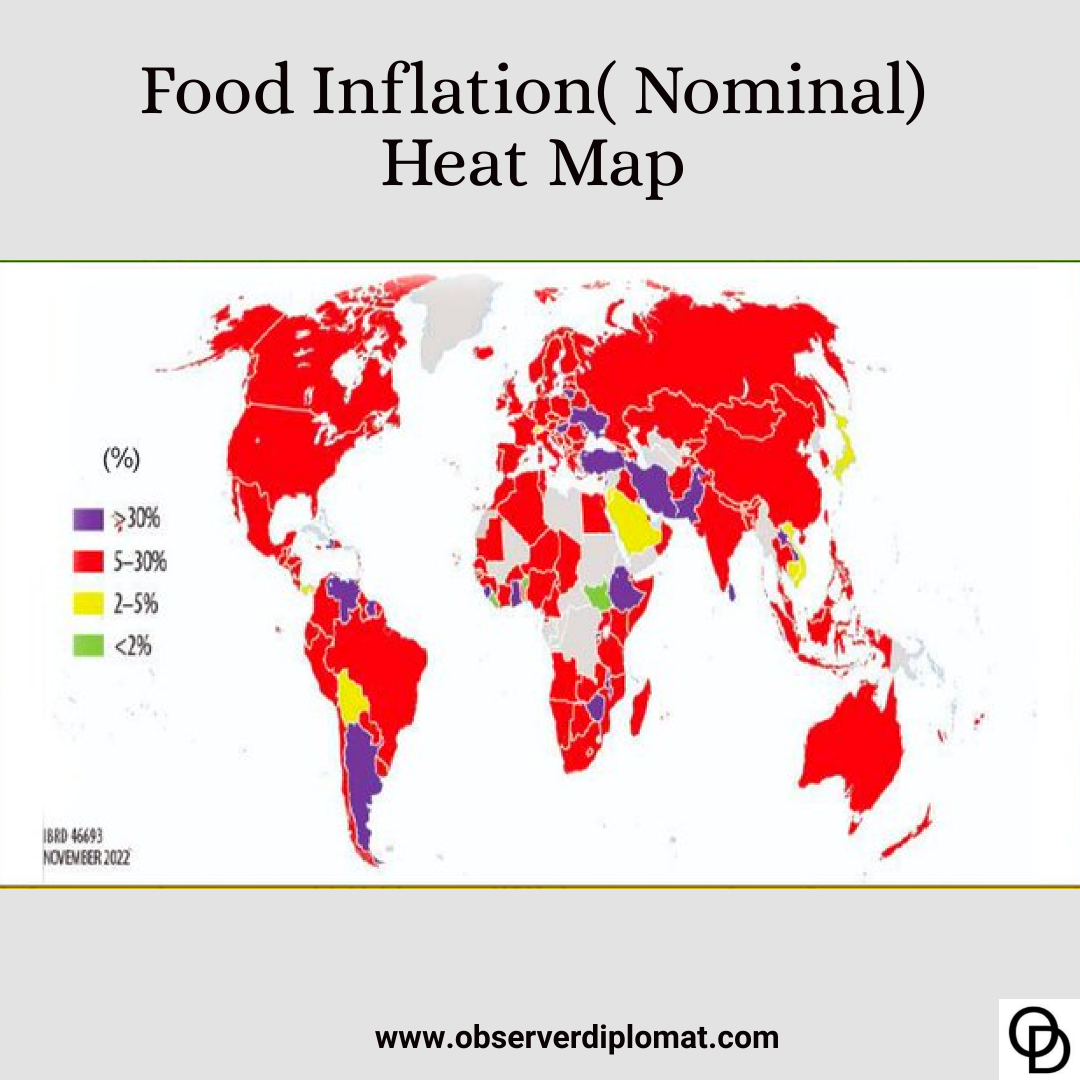The global inflation of domestic food prices is still high. Nearly all low- and middle-income countries experienced high inflation between July and October 2022, according to data; 83.3% of low-income nations, 90.7% of lower-middle-income nations, and 95% of upper-middle-income nations experienced inflation levels above 5%, with many experiencing double-digit inflation. It has increased to 86.8% of high-income countries that experience high food price inflation.
The World Bank predicts that food prices would fall by 6% in 2023 and stabilise in 2024. International grain prices are still impacted by the Black Sea Grain Initiative. Future export interruptions from Russia or Ukraine and rising energy costs could push prices higher. A global crisis brought on by high food prices is pushing millions more people into extreme poverty and amplifying hunger and malnutrition. By driving up the cost of labour and the materials required to produce store, and transport commodities, inflation and interest rate increases may also pose hazards to commodity prices.
















